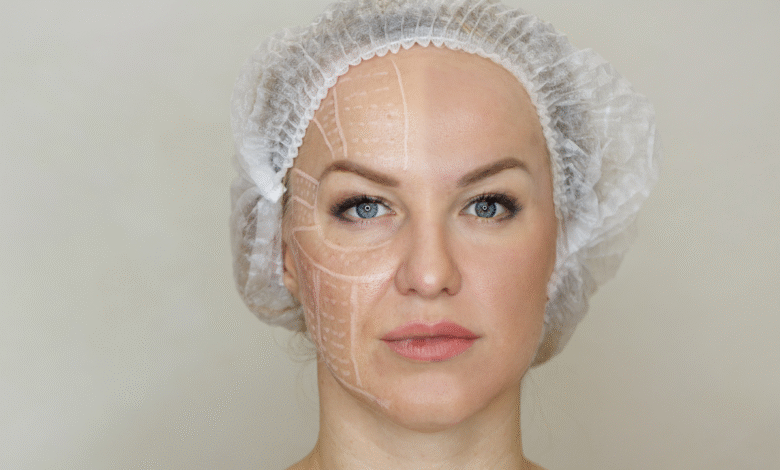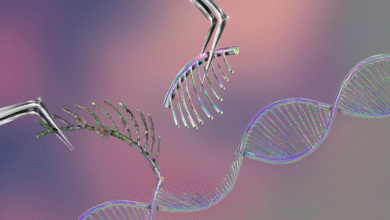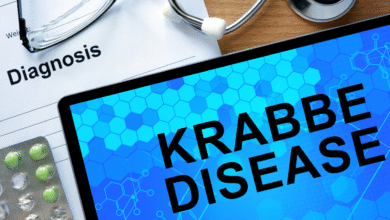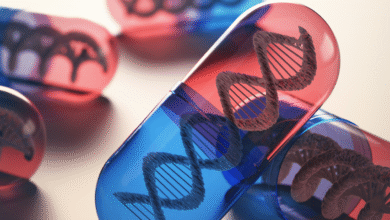Blog
SMA बीमारी की पूरी जानकारी: टाइप, लक्षण और आधुनिक इलाज:

स्पाइनल मस्कुलर एट्रोफी (SMA) क्या है?
- स्पाइनल मस्कुलर एट्रोफी (SMA) एक जेनेटिक बीमारी है
- जिसमें शरीर की नसें और मांसपेशियाँ धीरे-धीरे कमजोर होने लगती हैं।
- यह बीमारी SMN1 नामक जीन में समस्या के कारण होती है।
- इस जीन की खराबी से शरीर में SMN प्रोटीन नहीं बन पाता, जो नसों के लिए बहुत ज़रूरी है।
- इसके बिना नसें सही ढंग से काम नहीं कर पातीं और मांसपेशियाँ धीरे-धीरे सिकुड़ने लगती हैं।
SMA क्यों होता है?
- SMA का मुख्य कारण SMN1 जीन में बदलाव (mutation) है।
- यह बदलाव माता-पिता से बच्चे को ट्रांसफर होता है।
- अगर दोनों माता-पिता के पास यह दोषपूर्ण जीन हो तो बच्चे में SMA होने का खतरा ज़्यादा रहता है।
- यह बीमारी जन्म से ही मौजूद होती है लेकिन लक्षण धीरे-धीरे दिखाई देते हैं।
SMA के लक्षण क्या हैं?
- SMA के लक्षण उसकी टाइप और गंभीरता पर निर्भर करते हैं।
- छोटे बच्चों में यह बीमारी जल्दी दिखाई देती है जबकि कुछ मामलों में बड़े होने पर भी लक्षण दिख सकते हैं।
- इसमें बच्चे का सिर संभालने में दिक्कत, बार-बार गिरना, बैठने या चलने में कमजोरी, सांस लेने में कठिनाई और मांसपेशियों का पतला होना शामिल है।
SMA की कितनी टाइप होती हैं?
- SMA की मुख्य रूप से चार टाइप होती हैं – टाइप 1, टाइप 2, टाइप 3 और टाइप 4। टाइप 1
- सबसे गंभीर होती है और जन्म के कुछ महीनों में ही लक्षण दिखाती है।
- टाइप 2 और 3 कम गंभीर होती हैं और बच्चों को धीरे-धीरे चलने-फिरने में कठिनाई होती है।
- टाइप 4 आमतौर पर वयस्कों में पाई जाती है और इसके लक्षण हल्के होते हैं।
SMA का निदान कैसे किया जाता है?
- SMA का पता लगाने के लिए जेनेटिक टेस्ट किया जाता है जिसमें SMN1 जीन की जांच की जाती है।
- इसके अलावा डॉक्टर शारीरिक जांच, इलेक्ट्रोमायोग्राफी (EMG) और मसल बायोप्सी भी कर सकते हैं।
- जन्म के बाद नवजात स्क्रीनिंग टेस्ट से भी इस बीमारी का जल्दी पता लगाया जा सकता है।
क्या SMA का इलाज संभव है?
SMA का पूरी तरह इलाज अभी संभव नहीं है लेकिन आधुनिक दवाइयों और थेरेपी से मरीज की ज़िंदगी बेहतर बनाई जा सकती है। इसमें विशेष दवाइयाँ जैसे Nusinersen और Gene Therapy शामिल हैं। साथ ही फिजियोथेरेपी और रेस्पिरेटरी सपोर्ट से मरीज की स्थिति में सुधार लाया जा सकता है।
SMA मरीज को किस तरह की देखभाल की ज़रूरत होती है?
- SMA मरीज को हर रोज़ फिजियोथेरेपी, सही पोषण और सांस लेने में मदद के लिए सपोर्ट की ज़रूरत होती है।
- बच्चों को बैठने, खड़े होने और चलने के लिए सहारा देना पड़ता है।
- मरीज को संक्रमण से बचाना भी ज़रूरी है क्योंकि उनकी रोग प्रतिरोधक क्षमता कमजोर हो जाती है।
SMA में खानपान का क्या रोल है?
- SMA मरीजों के लिए पौष्टिक भोजन बहुत ज़रूरी है।
- उन्हें प्रोटीन, विटामिन और मिनरल्स से भरपूर डाइट दी जानी चाहिए ताकि मांसपेशियाँ और हड्डियाँ मज़बूत रहें।
- आसानी से पचने वाला खाना और पर्याप्त तरल पदार्थ भी शामिल करना चाहिए ताकि शरीर में ऊर्जा बनी रहे।
क्या SMA को रोका जा सकता है?
- SMA को पूरी तरह रोकना संभव नहीं है क्योंकि यह जेनेटिक बीमारी है।
- लेकिन शादी से पहले या गर्भावस्था से पहले जेनेटिक टेस्टिंग करके यह पता लगाया जा सकता है कि
- बच्चे में SMA का खतरा है या नहीं। समय पर टेस्ट और काउंसलिंग से इसके जोखिम को कम किया जा सकता है।
SMA से पीड़ित बच्चों का भविष्य कैसा होता है?
- SMA से पीड़ित बच्चों का भविष्य उनकी बीमारी की टाइप और गंभीरता पर निर्भर करता है।
- टाइप 1 वाले बच्चों की स्थिति गंभीर होती है लेकिन आधुनिक इलाज से उनकी जीवन प्रत्याशा बढ़ रही है।
- टाइप 2 और 3 वाले बच्चे सहारे के साथ सामान्य जीवन जी सकते हैं
- जबकि टाइप 4 में मरीज लगभग सामान्य जीवन जी पाते हैं। सही देखभाल और इलाज से मरीज लंबे समय तक स्वस्थ रह सकते हैं।





